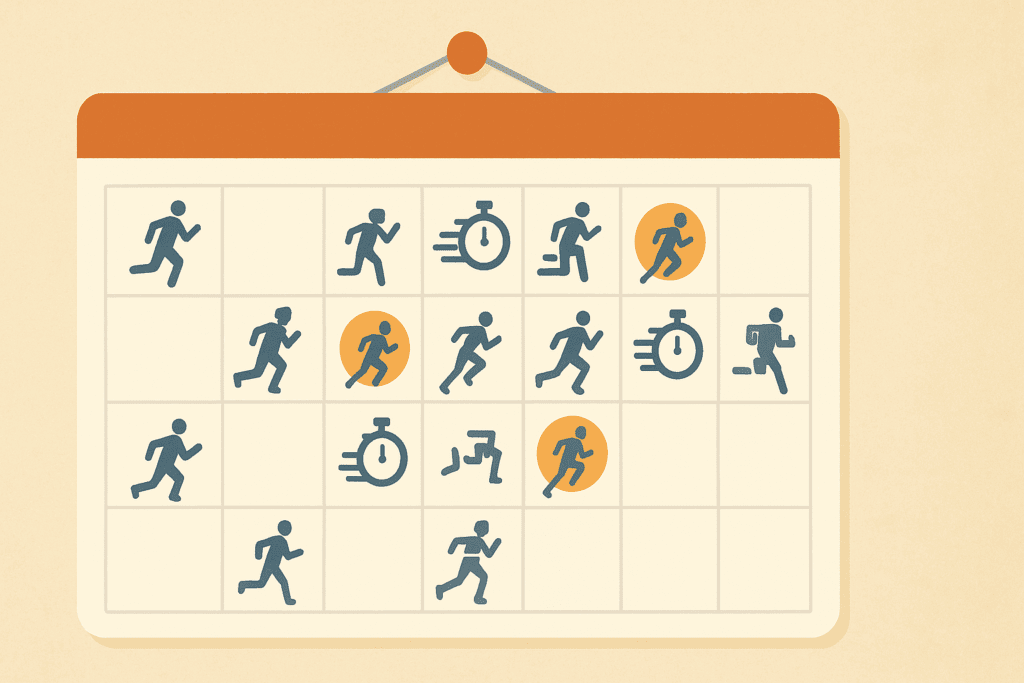Understanding the Meaning of Aerobic Capacity and Its Role in Performance
In the world of fitness and athletic performance, aerobic endurance is a foundational pillar that often distinguishes high-performing individuals from the rest. But what is aerobic capacity, and why does it matter so much for physical performance? At its core, aerobic capacity refers to the body’s ability to take in, transport, and utilize oxygen during prolonged physical activity. It directly reflects the efficiency of the cardiovascular and respiratory systems and indicates how well the muscles can sustain activity over time.
The aerobic capacity definition in scientific terms centers around VO2 max, which is the maximum volume of oxygen the body can utilize per minute, per kilogram of body weight. This metric provides insight into an individual’s potential for endurance-based activities. When we define aerobic capacity, we’re not just referencing a number; we’re talking about a vital biological function that underpins everything from daily movement to elite sports performance. Whether it’s a long-distance runner maintaining pace over miles or a cyclist powering through a mountainous terrain, a high aerobic capacity allows athletes to perform at a sustained level without premature fatigue.
Understanding the meaning of aerobic capacity becomes even more important in training contexts, where athletes and fitness enthusiasts aim to elevate their cardiovascular efficiency. A well-developed aerobic system ensures a greater supply of oxygen to the working muscles, leading to improved stamina, delayed onset of fatigue, and better recovery. Thus, building aerobic endurance isn’t just for athletes; it’s essential for anyone looking to improve health, longevity, and physical output in a natural and sustainable way.
You may also like: How to Increase Stamina and Endurance Naturally: Smart Training Tips and Nutrition Habits That Support Cardiovascular Fitness

Exploring the Aerobic Endurance Definition and Its Physiological Foundations
When we discuss aerobic endurance, we are referring to the body’s capacity to perform moderate to intense exercise over extended periods while relying primarily on aerobic metabolism. The aerobic endurance definition goes beyond simple stamina; it encompasses the ability of the heart, lungs, and vascular system to supply oxygen efficiently and continuously to working muscles. In simpler terms, it’s how long and how hard your body can go before needing a break.
Unlike anaerobic performance, which depends on quick bursts of energy and creates lactate as a byproduct, aerobic endurance is sustained and efficient. It draws on oxygen to convert carbohydrates and fats into usable energy without the rapid buildup of lactic acid. This means the body can keep going longer, recover faster, and avoid the muscle burn and fatigue that often accompany anaerobic exertion. For athletes in endurance sports like running, swimming, and cycling, cultivating aerobic endurance is non-negotiable—it’s the engine that powers their prolonged efforts.
From a physiological standpoint, aerobic endurance training enhances capillary density in muscle tissue, improves mitochondrial function, and increases stroke volume in the heart. These adaptations make it easier for the body to transport oxygen-rich blood to the muscles and remove metabolic waste efficiently. As a result, athletes experience a noticeable improvement in their ability to maintain higher intensities for longer periods. Understanding what aerobic endurance means—and how it functions within the broader scope of physical fitness—can inform smarter, more effective training strategies.

Aerobic Power and the Path to High Cardio Capacity
Closely linked to the concept of aerobic endurance is aerobic power, which refers to the rate at which the body can produce energy through aerobic metabolism. Aerobic power is often measured by VO2 max, making it a critical indicator of both potential and performance. While aerobic endurance describes how long one can maintain effort, aerobic power describes how intensely that effort can be sustained. Together, these two elements shape the framework of high cardio capacity.
Achieving high cardio capacity isn’t solely about logging endless miles or spending hours on a treadmill. It requires targeted training that balances intensity and volume, progressively challenging the heart, lungs, and muscles to adapt. Interval training, for example, is an effective way to push the boundaries of aerobic power. By alternating between high and moderate intensities, athletes can increase their VO2 max and improve both speed and stamina.
The benefits of increasing aerobic capacity are not limited to sports performance. Individuals with high cardio capacity often experience lower resting heart rates, better blood pressure regulation, and improved metabolic health. Their bodies become more efficient at burning fat for fuel, which aids in weight management and energy regulation. From a practical standpoint, everyday activities—from climbing stairs to carrying groceries—become less taxing. Understanding and developing aerobic power is thus not only a performance enhancer but also a pathway to overall wellness.

Natural Strategies to Enhance Aerobic Endurance and Cardio Capacity
While performance-enhancing drugs or artificial supplements might offer short-term boosts, the most sustainable and health-conscious way to improve aerobic endurance lies in natural methods. Building aerobic capacity naturally begins with consistent aerobic training that gradually increases in intensity and duration. Activities such as running, swimming, rowing, and cycling are classic endurance builders, especially when performed at 60-80% of maximum heart rate for extended durations.
Cross-training is another effective strategy that promotes a well-rounded cardiovascular base while reducing the risk of overuse injuries. For example, a runner might integrate swimming or cycling into their weekly routine to challenge the heart and lungs in new ways while giving joints a break. Additionally, strength training—particularly with compound, functional movements—can support aerobic development by improving muscular endurance and overall efficiency.
Nutrition plays a central role in supporting aerobic performance. A diet rich in complex carbohydrates, healthy fats, and lean proteins ensures that the body has the fuel it needs to perform and recover effectively. Hydration is equally important, as even mild dehydration can significantly reduce endurance capacity. Finally, adequate rest and sleep are critical, allowing the body to repair, adapt, and rebuild after training. Together, these natural strategies form a holistic approach to enhancing aerobic endurance in a way that respects the body’s rhythms and long-term health.

The Science Behind the Benefits of Increasing Aerobic Capacity
The physiological benefits of increasing aerobic capacity are deeply rooted in science. When aerobic capacity improves, the body experiences enhanced oxygen delivery to muscles, more efficient energy production, and superior waste removal. These adaptations collectively result in greater exercise economy, meaning that the body uses less energy to perform the same amount of work.
One of the most significant changes occurs in the heart. With regular endurance training, the heart muscle becomes stronger and more efficient, pumping a greater volume of blood with each beat. This increased stroke volume means the heart doesn’t have to work as hard to circulate oxygen, resulting in a lower resting heart rate and improved cardiovascular health. Lung function also improves, allowing for deeper breaths and better oxygen exchange, which supports sustained physical effort.
Muscles adapt as well, developing more mitochondria—the powerhouses of cells—and increasing the enzymes necessary for aerobic metabolism. This allows the body to use oxygen more effectively, particularly during prolonged exertion. In real-world terms, this translates into the ability to run faster, cycle longer, or simply enjoy physical activity with greater ease and less fatigue. These scientifically grounded benefits validate the focus on aerobic endurance in both athletic and health-oriented training programs.

Training Principles for Maximizing Aerobic Endurance Naturally
Improving aerobic endurance requires a thoughtful, progressive approach rooted in sound training principles. The cornerstone of endurance training is the principle of overload—challenging the body beyond its current capacity to stimulate adaptation. However, overload must be balanced with recovery to avoid overtraining and injury. A structured training program often includes long, steady-state sessions to build base endurance, complemented by tempo runs and interval sessions to enhance aerobic power.
Periodization is another key element, involving the strategic planning of training phases to optimize performance and recovery. For example, an athlete may cycle through phases of base building, intensity focus, and tapering, depending on their goals and competition schedule. This systematic variation helps prevent plateaus and encourages continual improvement in both aerobic capacity and endurance.
Listening to the body is perhaps the most underrated yet vital aspect of training. Monitoring heart rate, perceived exertion, and recovery markers such as sleep quality and mood can provide important feedback. By tuning into these signals, athletes and fitness enthusiasts can adjust their training load to align with their physiological readiness, thereby reducing the risk of burnout and ensuring sustainable progress. The synergy between smart programming and attentive self-monitoring is essential for maximizing aerobic performance through natural means.

Real-World Applications and Long-Term Health Impacts
The value of aerobic endurance extends far beyond the confines of athletic competition. In everyday life, having a strong aerobic base translates to greater energy, resilience, and functional capacity. People with higher levels of aerobic fitness are more likely to maintain independence as they age, handle physical tasks with ease, and enjoy a higher quality of life. Activities that once seemed taxing—playing with children, engaging in outdoor recreation, or simply getting through a busy workday—become manageable and even enjoyable.
There is also a strong correlation between aerobic fitness and reduced risk for chronic diseases. Studies consistently show that individuals with high cardio capacity have a lower incidence of cardiovascular disease, type 2 diabetes, and certain types of cancer. Aerobic fitness supports metabolic flexibility, enhances insulin sensitivity, and contributes to healthier body composition—all of which are protective factors against lifestyle-related illnesses.
From a mental health perspective, aerobic activity stimulates the release of endorphins and other neurochemicals associated with improved mood and reduced anxiety. The meditative rhythm of activities like running or swimming can offer a form of psychological respite, enhancing emotional resilience and cognitive function. In this sense, developing aerobic endurance is not just a physical investment but a holistic one—improving mind, body, and spirit.
Frequently Asked Questions: Aerobic Endurance and Cardio Capacity
How does psychological resilience influence aerobic endurance over time? Psychological resilience can significantly shape one’s ability to build and sustain aerobic endurance. Long training sessions, especially those aimed at enhancing high cardio capacity, require mental stamina as much as physical conditioning. Overcoming mental fatigue, maintaining motivation during plateaus, and pushing through discomfort are all crucial psychological skills that directly influence endurance progression. In this context, the meaning of aerobic capacity goes beyond oxygen uptake; it encompasses one’s mindset and emotional regulation during stress. Athletes who cultivate mindfulness, positive self-talk, and goal-setting practices often experience fewer setbacks and more consistent gains in aerobic endurance.
Are there genetic factors that influence an individual’s aerobic power? Yes, genetics can play a substantial role in determining baseline aerobic power and potential for developing cardio capacity. Variations in genes related to mitochondrial function, red blood cell production, and cardiovascular efficiency all influence how effectively an individual can process oxygen during prolonged exertion. However, while some people may be predisposed to higher aerobic capacity, training still plays a critical role in maximizing potential. Understanding what is aerobic capacity also involves acknowledging the interaction between genetic predisposition and lifestyle interventions. Even those with modest genetic advantage can achieve remarkable improvements in aerobic endurance with consistent, structured effort.
Can improving aerobic capacity enhance brain function? Emerging research supports a strong link between enhanced aerobic endurance and cognitive performance. Increased blood flow and oxygen delivery to the brain—key features of high cardio capacity—can sharpen mental clarity, boost memory, and improve mood stability. Regular aerobic training has also been associated with neurogenesis in the hippocampus, a region vital for learning and emotional regulation. While the aerobic capacity definition primarily relates to physical performance, its cognitive implications are equally significant. By investing in aerobic power, individuals are not only strengthening the body but also promoting long-term brain health.
What role does sleep play in developing aerobic endurance? Sleep is an often-underestimated component in building and sustaining aerobic endurance. During deep sleep, the body repairs muscle tissue, restores hormonal balance, and consolidates neuromuscular adaptations critical for performance gains. A lack of quality sleep can impair reaction time, reduce aerobic power, and lead to elevated stress hormones that interfere with recovery. To truly harness the benefits of increasing aerobic capacity, consistent rest is non-negotiable. When we define aerobic capacity, we must also consider recovery cycles as integral to optimizing endurance outcomes.
How do environmental factors affect cardio capacity? Environmental conditions such as altitude, temperature, and air quality can dramatically impact both short-term and long-term cardio capacity. At higher elevations, for example, reduced oxygen availability forces the body to adapt by increasing red blood cell production, eventually boosting aerobic power. On the other hand, high humidity and pollution can limit oxygen uptake and stress the respiratory system, temporarily reducing performance. Understanding the full aerobic endurance description must include how external variables interact with internal physiology. Athletes often use environmental stressors strategically to stimulate adaptation and improve overall aerobic capacity.
Is aerobic endurance just about cardio workouts, or can strength training contribute? While traditional cardio workouts are central to enhancing aerobic endurance, certain forms of strength training can also be beneficial. Circuit training, resistance exercises with minimal rest, and kettlebell conditioning all engage aerobic pathways when performed at moderate intensity. These activities contribute to muscular endurance and improve overall efficiency, reinforcing the benefits of increasing aerobic capacity. Incorporating strength work can also correct muscular imbalances and enhance movement economy, ultimately supporting better performance in classic endurance activities. When we explore what is aerobic endurance definition-wise, it’s important to include how varied modalities can contribute synergistically.
How do hydration strategies affect the body’s ability to sustain aerobic power? Hydration plays a pivotal role in maintaining aerobic power and preventing early fatigue. Even a small drop in hydration status can lead to reduced blood volume, impairing oxygen transport and thermoregulation. This directly affects the meaning of aerobic capacity in practical terms, as diminished performance often stems from overlooked hydration deficits. Strategic fluid intake before, during, and after workouts helps preserve cardiovascular function and extend endurance. Anyone aiming to define aerobic capacity in applied settings must consider hydration as an essential variable, especially during prolonged sessions or in hot environments.
What are some early warning signs of compromised aerobic capacity? Warning signs that your aerobic capacity may be compromised include increased breathlessness during usual workouts, slower recovery times, erratic heart rate responses, and a decline in workout motivation. These indicators suggest that the body is struggling to meet the aerobic demands placed upon it. Recognizing these signs early can prevent overtraining and guide timely adjustments in training intensity, nutrition, or rest. Although the aerobic capacity definition centers on oxygen utilization, it also includes how well the body copes with that demand under stress. Addressing these signals promptly helps preserve long-term aerobic endurance.
Can lifestyle stress influence how efficiently we build aerobic endurance? Yes, lifestyle stress can profoundly affect the efficiency of building aerobic endurance. Chronic stress elevates cortisol levels, impairs sleep, and may hinder muscular recovery—all of which can stall progress in developing aerobic power. This interplay between physical and psychological stressors affects the practical outcome of even the most well-designed training programs. The benefits of increasing aerobic capacity are significantly enhanced when stress management techniques are part of the routine. As we examine the deeper meaning of aerobic capacity, the role of emotional balance and recovery becomes unmistakably central.
How can aging athletes maintain or regain high cardio capacity naturally? Aging does lead to a gradual decline in maximum aerobic power, but with thoughtful training, much of this loss can be slowed or even reversed. Low-impact activities like cycling, swimming, and brisk walking allow older adults to maintain high cardio capacity without risking joint damage. Interval training tailored to fitness level, adequate protein intake, and prioritizing mobility all contribute to preserving aerobic endurance. Moreover, aerobic capacity definition for older adults may shift from peak performance to functional independence and energy sustainability. Maintaining lifelong aerobic endurance is not just possible but beneficial in enhancing quality of life and reducing age-related decline.
Conclusion: Embracing the Benefits of Aerobic Endurance for Natural Performance Enhancement
In the journey toward better health and peak performance, few strategies offer as many multifaceted rewards as developing aerobic endurance. Understanding what is aerobic capacity and how it influences performance opens the door to more intelligent, effective training. Whether defined by VO2 max or experienced as the ease of completing a long hike, aerobic capacity reflects a core component of human fitness that is both measurable and deeply impactful.
The aerobic endurance description encompasses not only the physiological adaptations that occur within the body but also the broader lifestyle changes that support long-term wellness. From enhancing aerobic power to cultivating a high cardio capacity, the benefits of increasing aerobic capacity are clear, scientifically validated, and attainable through consistent, natural efforts. By focusing on sustainable strategies like balanced training, optimal nutrition, and proper recovery, individuals can unlock their full endurance potential without compromising health or integrity.
Ultimately, embracing the principles of aerobic training empowers individuals to move through life with greater energy, resilience, and purpose. Whether you’re an elite athlete or someone seeking to improve everyday function, the pursuit of enhanced aerobic capacity offers a meaningful path to elevated physical and mental well-being. Through this lens, aerobic endurance becomes more than just a fitness goal—it becomes a foundation for thriving in every aspect of life.
Was this article helpful? Don’t let it stop with you. Share it right now with someone who needs to see it—whether it’s a friend, a colleague, or your whole network. And if staying ahead on this topic matters to you, subscribe to this publication for the most up-to-date information. You’ll get the latest insights delivered straight to you—no searching, no missing out.

